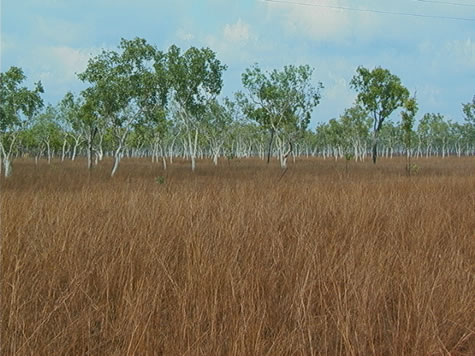THEME: Pine Creek Region
SUBJECT AREA: Geography
TOPIC: The Wet Season
The weather in Australia is almost in reverse to the weather in the Northern Hemisphere. When it is winter down here in Australia it would be summer in Europe. In North Australia there is a saying that during the summer it is the “wet season” and the winter is the “dry season”. The two seasons rarely have anything in between - such as autumn and spring; these seasons are predominantly found in more northern latitudes. As you get closer to the equator there are fewer seasons, mainly just one season through the year. Temperatures and climate remain much more constant with little variation in either.

Comparing rainfall from the more arid Alice Springs to the tropical Darwin you will notice a major difference. From November, December, January, February and March (the wet), average rainfall is around 1290 mm in Darwin, compared to Alice Springs at 190mm. The dry season in Darwin has an average of 22mm, compared to Alice Springs at 39mm. The Monsoon Trough that passes through the tropical climates during the summer months, bringing consistent rain, storms and occasionally cyclones, can explain the dramatic difference in the two towns.
In Australia there is a competition called the Golden Gumboot (wellington boot), a competition of the town that records the most rainfall. Two towns in North Queensland always fight over who gets the most rainfall. These two towns - Mirriwinni and Tarzali - are on opposite sides of a mountain range. It would not be uncommon for either town to record up to 3000mm of rain in one year.
Suggested activities: Examine annual rainfall amounts in your area. Which season has the heaviest rainfall amounts? Explain how the local geography plays a role in affecting yearly rainfall. Why do locations on one side of a mountain range get more or less rain?
Feed your children wheat. Joshua.